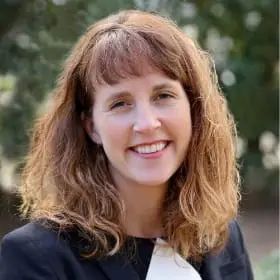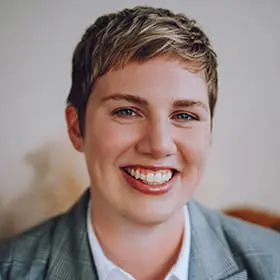
Insights
July 21, 2020
Taking the Leap – Buying a Second Home
In Financial Planning, Wealth Strategy

July 14, 2020
Buying a second home. It has always been an aspirational goal for our family, and with the shelter in place ordinance, the idea of having a safe getaway where we could unwind and get away from my dining-room-turned-office became the motivating factor of finding that second home now. All my husband and I knew when we embarked on this adventure is that we wanted something east – sort of a ‘gateway to the outdoors’ feel, where we, as a family, would enjoy nature, hiking, skiing, golfing – and could get to with relative ease. I also knew, given my career in finance, that our second home should be a strategic investment as well. What we eventually found was not only a perfect fit for our family, but also a potential significant increase in our net worth. Through this process, I was reminded that real estate can be a wealth creation opportunity, something that can springboard you towards retirement goals faster than diligent monthly savings ever could. Let’s explore that concept: I’ve captured our process and the surprising things we learned along the way in hopes that others can also take advantage of this unique investment opportunity.
First, we started with our current home, and decided to refinance while rates were (once again) at historic lows. Walking through the paperwork of the refinance, my husband and I were amazed at how much equity had built in the five short years since we purchased our primary residence. We converted some of that equity into cash, which opened up options for a second home significantly. Like many people, we had thought of debt as the ‘enemy’ – a blemish on a balance sheet that should be decreased (and certainly not added to!) as soon as possible. As a wealth advisor, I often work with clients to determine their risk tolerance, and I recognize aversion to debt is completely normal. The nuance here is in the type of debt. Investing in an appreciating asset (a house), is much less risky than buying a depreciating asset (a boat) because a house can grow the asset side of your balance sheet and can be used to borrow against. The idea of taking on more debt to create wealth can be counter-intuitive, and it doesn’t work in all market situations. One of the reasons having a second mortgage makes economic sense for me is that interest rates are so low. I am making the calculated risk assessment that my real estate will appreciate at a higher rate than my borrowing costs. Additionally, we had several things on our side: equity in the house, ability to take on more monthly debt payments with minimal risk, and our relatively young ages.
I can’t emphasize this enough: when talking about debt, I’m not talking about maxing out credit cards with things like clothing or cars. Leveraging “calculated risk,” borrowing from one appreciating asset to purchase another appreciating asset, can help grow your personal balance sheet when timed correctly. Younger people who have 20+ years of income ahead of them can leverage “good” debt which can become an integral part of a growth-minded investment mix. Our Chief Investment Officer, Howard, likes to remind me that we have a uniquely American investment opportunity inherent in 30-year fixed mortgages. His point is well taken; when a buyer purchases a home early in life, a 30-year mortgage makes it affordable over a long period of time, often keeping the cost fixed while the asset (theoretically) increases in value significantly over that time. Even if you plan to move and sell the home in your lifetime, a well-purchased residence (think: location, location, location!) will usually appreciate well ahead of inflation over time.
Potential real estate investors (whether a primary home, second home, or investment rental property) should also seek guidance from experts, like wealth management professionals, mortgage brokers, and realtors, who can impart practical information and insights into real estate purchases before an offer is made on a property. Determining what the goals are for the home is a great place to start. Questions to think about when deciding where and what to purchase: is it a vacation home that should be close to activities of interest? Is the home a residence for a child in college, and by a school? Is the goal to retire in the home, and therefore should be somewhere community can be established? Is it an investment property expected to generate income? Setting the goals for the home in question will help the investor narrow down what type of real estate to invest in, and where that investment will have the most impact. These are great guidelines to get you started.
Then the question of how much an investor would like to spend on an individual real estate investment creates the second set of qualifiers for the property. How much equity can be leveraged for the second home? Is now the time to invest? Is there cashflow to pay for the monthly mortgage(s)? If it’s a vacation home, is there a balance of rental income and personal enjoyment to make the purchase more feasible? Will owning a second home cause stress: financial, maintenance, or other that would deem it not worth the risk? Take a moment to think big picture –should that cash on hand be spent on real estate or is there something else, like a business degree, that may generate more earnings over a lifetime?
Setting goals and taking a 360-degree view of the assets and equity in your family portfolio is a solid start to buying that second (or third or fourth) home for vacation or investment. While all investing carries inherent risk, spending the time to do the due-diligence and analysis for any investment opportunity can reduce fears. The long and short of my learning: set goals, do the research, and assess personal risk tolerance prior to purchase. You might be surprised by what you learn, both about yourself and your opportunities! I would love to write more on the subject, but right now I’m driving east, about 2 hours from Seattle, where I will soon be enjoying s’mores and building family memories (and wealth!) in our lovely mountain-side getaway, wondering why we didn’t do this sooner!
Sincerely,
Rachel McCracken, CFA®, MBA | Team Lead & Relationship Manager
Rachel can be contacted at (425) 463-3008, rachel.mccracken@coldstream.com, www.coldstream.com
Disclaimer: The CFA Institute owns the certification marks CFA® and Chartered Financial Analyst®.
Insights Tags
Related Articles

June 27, 2025
Diversified Estate Planning for LGBTQ+ Families


June 20, 2025
Incorporating a “Die with Zero” Philosophy into Your Long-Term Financial Plan



June 9, 2025
Helping children build wealth of their own: why the Roth IRA is an important gifting vehicle.

